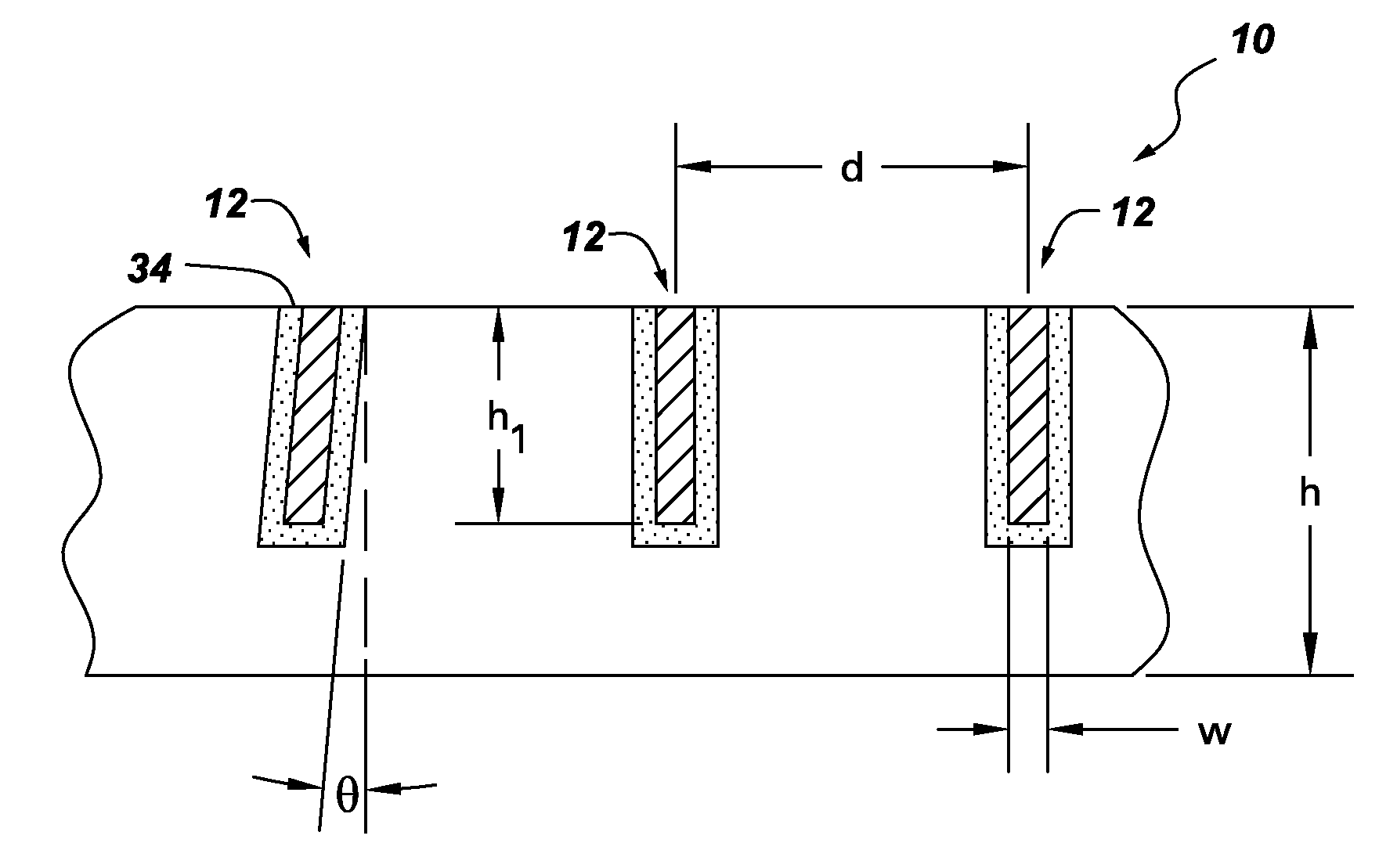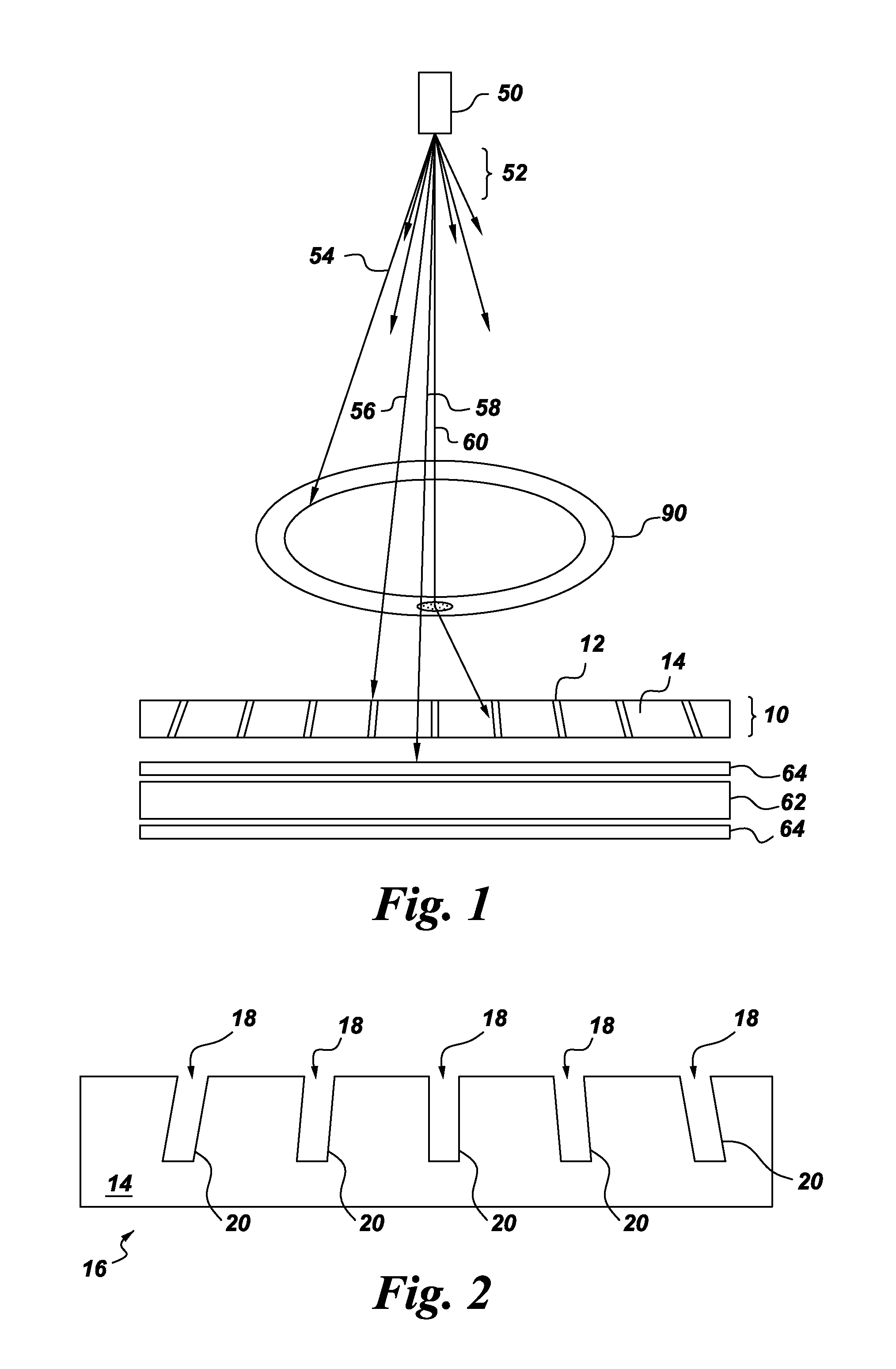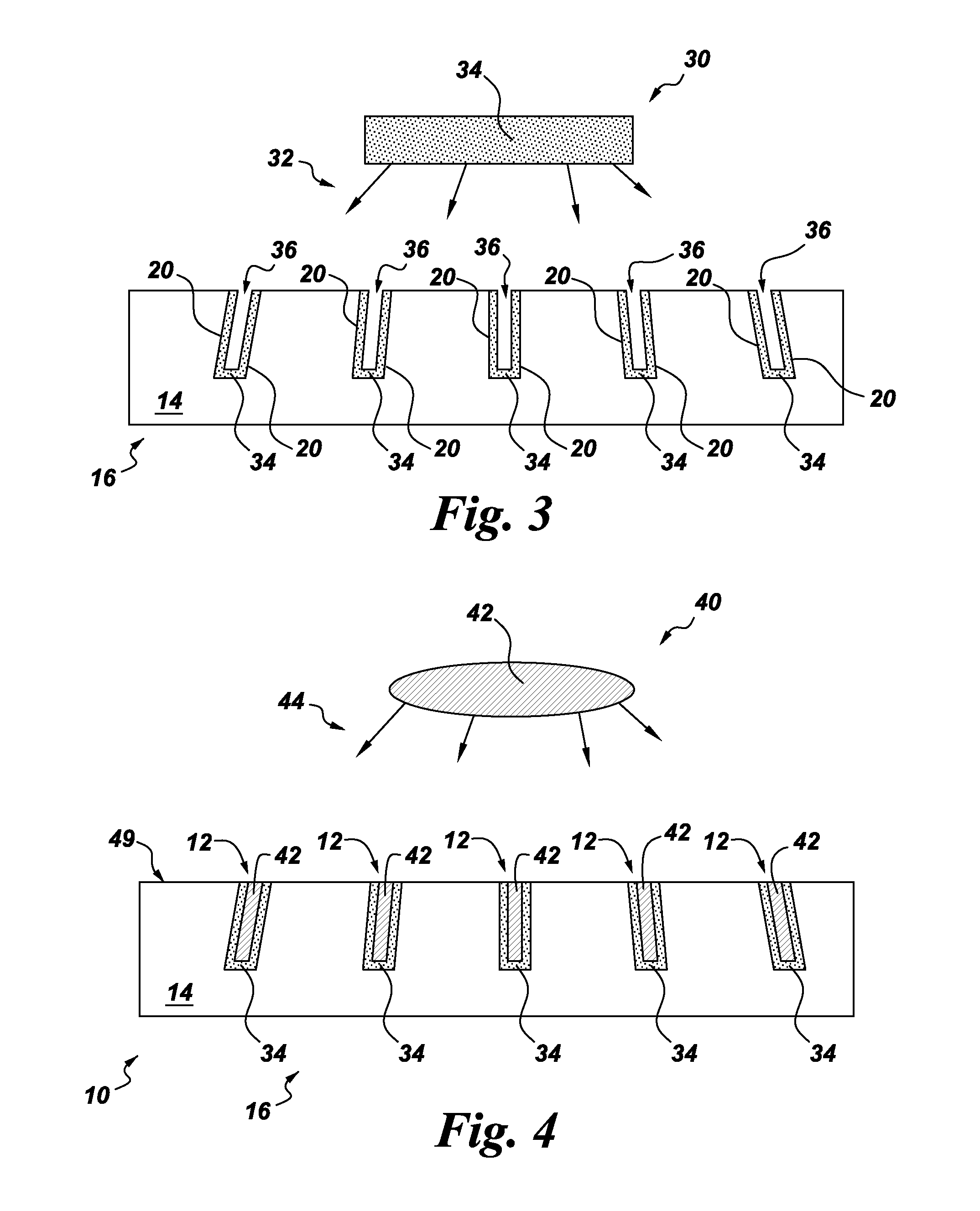Anti-scatter X-ray grid device and method of making same
a grid device and anti-scatter technology, applied in the field of diagnostic radiography, can solve the problems of reducing the quality of images, increasing the dose of x-rays, and also losing imaging information, and achieves improved grid performance, thin grid lines, and high-transparency interspace materials
- Summary
- Abstract
- Description
- Claims
- Application Information
AI Technical Summary
Benefits of technology
Problems solved by technology
Method used
Image
Examples
Embodiment Construction
[0018]Aspects of the present invention have been shown to offer advantages over previous methodologies of making anti-scatter X-ray grid devices. Aspects of the present invention provide a manufacturing technique that allows for thinner grid lines and highly X-ray transparent interspace material in a cost effective and well-controlled process. Amongst other advantages, use of grid devices 10 employing the present invention will provide for better imaging results for mammographic and other low energy (e.g., about 26-33 kVp) X-ray systems.
[0019]FIG. 1 is a sectional side view of a conventional radiographic imaging arrangement employing an embodiment of the present invention. A tube 50 generates and emits x-radiation 52 which travels toward a body 90. Some of the x-radiation 54 is absorbed by the body 90 while some of the radiation penetrates and travels along paths 56 and 58 as primary radiation, and other radiation is deflected and travels along path 60 as scattered radiation.
[0020]R...
PUM
 Login to View More
Login to View More Abstract
Description
Claims
Application Information
 Login to View More
Login to View More - R&D
- Intellectual Property
- Life Sciences
- Materials
- Tech Scout
- Unparalleled Data Quality
- Higher Quality Content
- 60% Fewer Hallucinations
Browse by: Latest US Patents, China's latest patents, Technical Efficacy Thesaurus, Application Domain, Technology Topic, Popular Technical Reports.
© 2025 PatSnap. All rights reserved.Legal|Privacy policy|Modern Slavery Act Transparency Statement|Sitemap|About US| Contact US: help@patsnap.com



